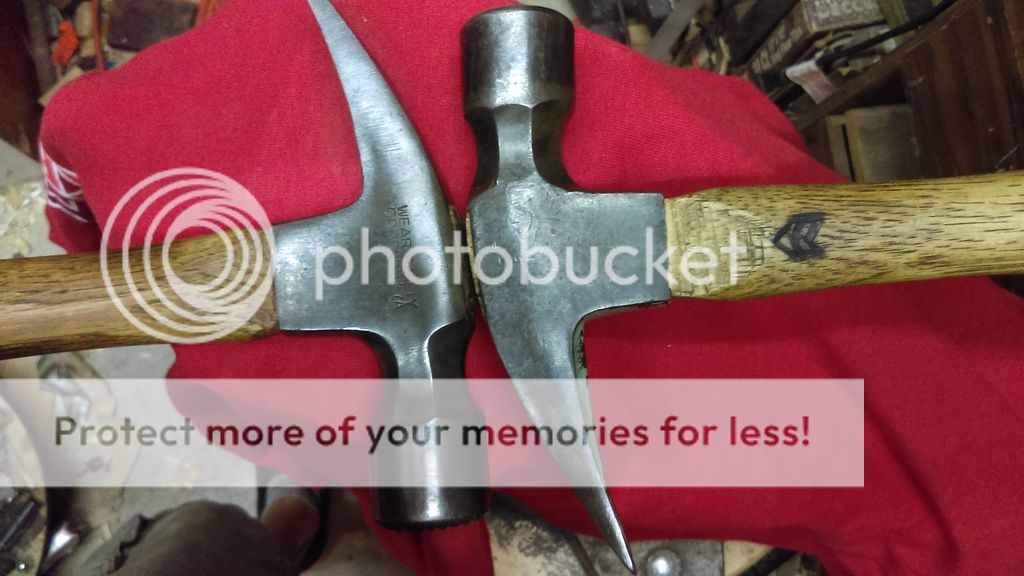- Joined
- Mar 12, 2012
- Messages
- 2,453
So a couple years ago my great uncle Bill passed. He was a master carpenter. While a few family vultures picked over the majority of his life for valuables, I walked around in his workshop. Scraps of exotic wood, long rotted with age, old tools and spider after spider. I found an old hatchet in the rubble and decided to try and revive it. I'm about to become part owner of the family property that my great uncle and grandfather worked their entire lives- that means a much more hands on role and a good hatchet will be indispensable. So I want to breathe a little life into this old thing and get to work.
Enough of my rambling, on to the hatchet. The head is stamped: Shapleigh Hardware Co, Diamond Edge, inside a diamond. There is another logo under that but it's obscured by built up rust. It looks like the rust isn't quite bad enough to cause major pitting, but I won't really know until I get the rust off. So that brings me to my first question. How do I remove the rust without destroying the logo? I've heard of vinegar baths, I have some white vinegar, is that appropriate? I have sandpaper and stuff but really want to save that logo. It doesn't look very deep in. The haft is gone. Brittle, cracked and loose.



Enough of my rambling, on to the hatchet. The head is stamped: Shapleigh Hardware Co, Diamond Edge, inside a diamond. There is another logo under that but it's obscured by built up rust. It looks like the rust isn't quite bad enough to cause major pitting, but I won't really know until I get the rust off. So that brings me to my first question. How do I remove the rust without destroying the logo? I've heard of vinegar baths, I have some white vinegar, is that appropriate? I have sandpaper and stuff but really want to save that logo. It doesn't look very deep in. The haft is gone. Brittle, cracked and loose.











